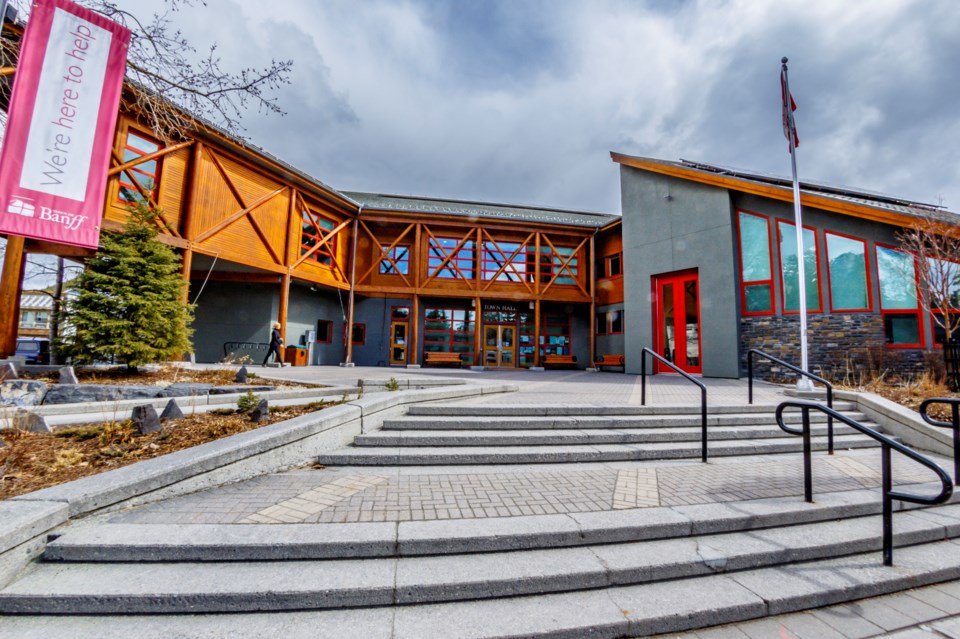BANFF – Changes have been made to Banff’s housing policy in a bid to encourage development of required housing sooner rather than later.
Council unanimously adopted the updated housing policy, which does away with a clause that allowed for third-party housing credits to be used by developers to fulfill required housing obligations.
Mayor Corrie DiManno said third-party credits haven’t worked in getting more housing built.
“We know the third-party credit system has been ineffective, and so I am really supportive of the change to discontinue that,” she said during the Jan. 22 council meeting.
Introduced in 1991 after incorporation of the municipality, Banff’s housing policy sets ratios for the amount of required housing associated with various uses and is meant to reflect the number of employees generated by a particular business.
The policy requires bedrooms actually be physically built, however cash-in-lieu payments and third-party partnerships and credits are alternatives when an applicant does not have the land, capital or time to build the housing themselves.
Removed from the policy are provisions that would allow housing that has been built or paid for via cash-in-lieu to be credited against future commercial development in perpetuity.
Emma Sanborn, Banff’s development planner, said administration had recommended removal of this timeline to encourage the building of housing as soon as possible for commercial developers.
“When someone is able to develop housing, we don’t want to include anything that would stop someone from building housing, possibly well in advance of them needing the credits,” she said.
“That’s the reason for the strike of this five-year timeline being the current liming for housing.”
The updated policy also includes additions and deletions that would only allow housing requirements to be met by construction of net new dwellings.
Council agreed with administration’s recommendation to get rid of bedroom size requirements within single detached housing because it was ineffective at meeting the housing policy.
“This better meets the intent of the housing policy, which is to create new housing,” said Sanborn.
Lastly, the updated policy also contains additions that stipulate development agreements are only allowed for cash-in-lieu payments exceeding $25,000.
The administrative cost of creating and monitoring a payment plan over three years would be maximized for amounts equal to or larger than $25,000.
“This is for efficiency,” said Sanborn.
DiManno said the housing policy has served the municipality well to date, but believes these recent changes are trying to create a fundamental shift to get housing built sooner rather than later.
“We want this policy to truly create net new dwellings that are needed as a result of commercial or institutional or government development, and we want these net new dwellings built as soon as possible,” she said.
Some of the next steps on the housing front include reconsideration of the cash-in-lieu rate, as council has previously discussed the possibility of making cash-in-lieu payments more in line with the actual cost of building housing.
There will also be consideration of the business licence bylaw as a method for charging housing cash-in-lieu on a yearly basis as opposed to a single point-in-time method based on change-of-use development permits.
The cash-in-lieu option has seldom been used and has generated just $118,000 for the housing reserve in the last six years. The median rate payment was just over $4,000, the highest payment was $65,000 and an outlier, and the lowest payment was $2,778.
As of 2018, the cash-in-lieu rate increase has been tied to the construction price index for apartment buildings in Calgary, and as a result, the cash-in-lieu rate has risen from $21,000 in 2018 to $53,813 in 2023.
Banff has an estimated housing shortfall of 750-1,000 units.
“If you can’t build it, then you’re going to end up paying cash-in-lieu for it, and we will determine that as we move through the housing ratio study information,” said DiManno.
Sanborn said the results of the housing ratio study will be used to inform future decisions around housing, including cash-in-lieu.
“The housing ratio study will look at all the different uses that we have defined in the land use bylaw, so eating and drinking, general retail, “ she said.
“We’ll look at the staffing ratio associated with a complement of those uses to make sure we’ve got the right requirements in the land use bylaw.”
Public information sessions will be hosted sometime before the end of March on a host of draft land use bylaw amendments to encourage more housing community-wide. Cash-in-lieu rates will form part of the public information sessions.
DiManno wants residents to show up in droves.
“I would encourage folks to please attend these public info sessions to learn more and to get educated on the types of changes we are trying to make in terms of addressing our housing crisis,” she said.
“I really look forward to having a robust community discussion around how we are going to work together to ensure that Banff is a livable place for our residents.”




